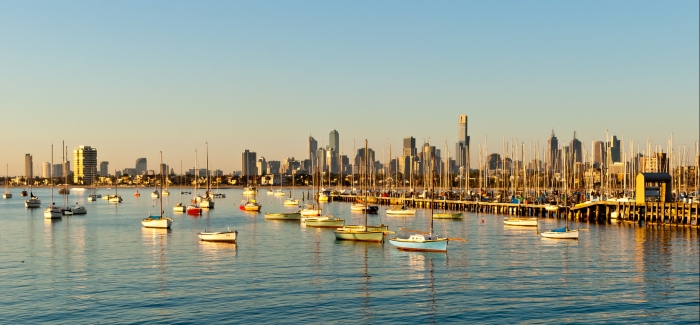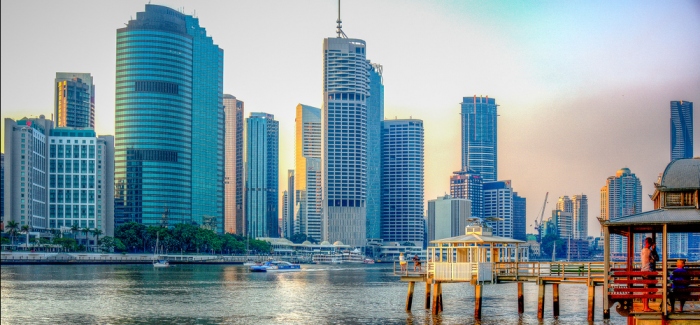In order to study in Australia, you will need to obtain an Australian student visa. You must be able to prove to the Department of Home Affairs that you meet the following key Australian student visa requirements:
- Genuine Temporary Entrant (GTE) requirement
- Financial requirements
- English proficiency requirements
- Health and character requirements
You’ll also need to complete an Australian student visa application form, pay the visa application fee, and perhaps attend an interview. Sound like a lot to remember? Here’s everything you need to know.
What is a Genuine Temporary Entrant (GTE)?
Introduced in November 2011, the Genuine Temporary Entrant (GTE) requirement says that the visa applicant must be able to demonstrate a genuine intention to stay in Australia temporarily for the purpose of study, or to accompany a student as a dependent (i.e. spouse or child) or as a guardian. The decision-makers at the Department of Home Affairs will consider the following factors:
- Circumstances in your home country
- Potential circumstances for you in Australia
- Value of your chosen course to your future
- Your immigration history
In order to determine whether you meet the GTE requirement, you may be asked to attend an interview at your nearest Australian embassy or consulate. Some applicants will only need to fill in a visa application form.
Completing an Australian student visa application form
All international students apply for the same visa: the Student Visa (Subclass 500), which you must apply for online.
Before applying for a visa, you’ll need to obtain a Confirmation of Enrolment (COE) or a Letter of Offer confirming you have been accepted into a course registered under the Commonwealth Register of Institutions of Courses (CRICOS). The COE will be in the form of an online code that you will need to enter into the appropriate section in the online visa application. You may also need to pay a deposit towards your tuition fees.
You will be able to change course afterwards to study in Australia at the same or a higher study level, but you’ll need to apply for a new visa if you’re changing course to a lower level on the Australian Qualification Framework (AQF) or a non-AQF level course (unless changing from a PhD to a master’s). You may also package your studies by studying two or more courses on your Student Visa (Subclass 500), where there is clear progression from one course to another.
m a PhD to a master’s). You may also package your studies by studying two or more courses on your Student Visa (Subclass 500), where there is clear progression from one course to another.
Australian student visa requirements
When completing your online visa application form, you’ll need to provide evidence of the following according to the Australian student visa requirements:
- Financial requirements: Evidence of sufficient funds to cover tuition, travel and living costs. From February 2018, the amount you need to prove you have for living costs (separate from tuition and travel) is set at AU$20,290 (~US$13,750) for a year. If you have dependents (such as a spouse and children), you will also need to show evidence of being able to cover living costs for them, including school fees. Alternatively, you can show evidence that your spouse or parents are willing to support you and that they earn at least AU$60,000 (~US$40,660) a year.
- English proficiency requirement: If you’re not from an English-speaking country (and haven’t completed at least five years’ study in an English-speaking country) you’ll need to prove you can speak English to the required level. Eligible tests include the IELTS, TOEFL iBT, Pearson Test of English (PTE) Academic, and Cambridge Advanced English (CAE). The score you will need will depend on whether you are starting a full degree, doing a foundation course, or enrolling on a preliminary English Language Intensive Course for Overseas Students (ELICOS).
- Health requirements: Some students may be asked to take a medical and/or a radiological check-up to show they’re in good health (this applies, for example, to those who intend to train as a doctor, dentist or nurse). If told to do so, you must attend an appointment with a doctor who has been approved by the Australian immigration department.
Except those from Belgium or Norway, all students are obliged to purchase Overseas Student Health Cover (OSHC). You may purchase this cover through your university, or directly from one of the five approved providers: Australian Health Management, BUPA Australia, Medibank Private, Allianz Global Assistance and nib OSHC. The cost of this health insurance cover will vary depending on the provider and how long you purchase cover for.
Students from Sweden who have purchased health insurance through Kammarkollegiet will not need to purchase OSHC. Belgian and Norwegian students are also not required to purchase OSHC as part of their visa requirements.
- Character requirements: Australian student visa requirements stipulate you must be of good character to enter Australia. This includes a criminal record check, to make sure you don’t have a substantial criminal record. You may also need to acquire a penal clearance certificate (or police certificate) or get a police statement, and may be asked to complete a Character Statutory Declaration Form.
Australian student visa documents
The Department of Home Affairs website has a document checklist feature that will provide you with a list of documents required for your specific circumstances. Typically, students must submit the following:
- Completed Australian student visa application form (157A)
- Paid visa application fee – currently AU$620 (~US$420) in most cases
- Copy of passport biodata page (some students may be asked to physically provide their passport)
- Certificate of Enrolment or Letter of Offer
- Evidence of sufficient funds
- Evidence of health insurance cover
- English proficiency test results
- Criminal record check results
- Four recent passport-sized photographs
After you have assembled and scanned your supporting documents, you’ll need to create an account and apply with the online ImmiAccount application system.
Most visa applications take four weeks to process. If you study in Australia for a course that is longer than 10 months and finishes at the end of an Australian academic year (usually mid-December) your visa will usually be valid until 15 March the following year. If your course is longer than 10 months and finishes in January to October, your visa will usually be valid for two months following the completion of your course.
Under some circumstances, it may be possible to apply for a further visa at the end of your course (consult the Department of Home Affairs website for more details)
Using your student visa
You can enter Australia on your student visa up to 90 days before your course starts. Within seven days of arrival, you must inform your education provider of your resident address, and also inform them within seven days if you change address.
While on a student visa, you may work up to 40 hours per fortnight during term time, and full-time in the holidays. The visa is automatically issued with permission to work, although you’re not allowed to begin working until your course has started, and should not rely on work in order to support yourself or your family while in Australia.
If you’re studying a master’s by research or a PhD you don’t have any work restrictions. Keep in mind that any work required as part of your course is not included in the limit. Voluntary/unpaid work is also not included in the 40-hour limit if it’s genuinely voluntary, for a non-profit organization and for the benefit of the community.
While in possession of a student visa, you have certain obligations to fulfil: you must remain enrolled in a CRICOS-registered course, attend classes regularly, make satisfactory course progress and maintain OSHC health insurance. There are also certain visa conditions you and your dependents must comply with; breaching a visa condition may result in the cancellation of your visa.
This article was originally published in February 2014. It was last updated in August 2019 to reflect changes to Australian student visa policies.
Want more content like this? Register for free site membership to get regular updates and your own personal content feed.








